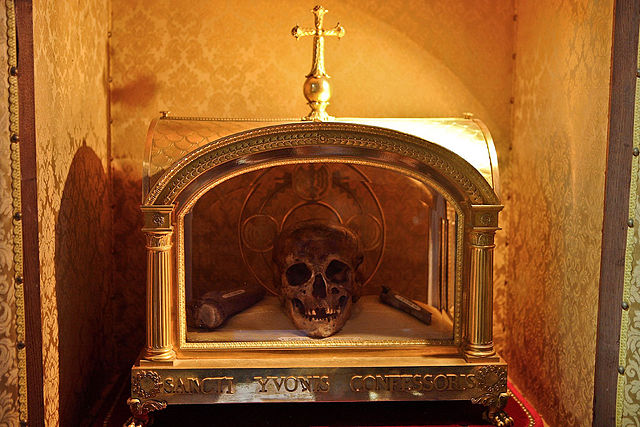In religion, a relic is an object or article of religious significance from the past. It usually consists of the physical remains or personal effects of a saint or other person preserved for the purpose of veneration as a tangible memorial. Relics are an important aspect of some forms of Buddhism, Christianity, Islam, shamanism, and many other religions. Relic derives from the Latin reliquiae, meaning "remains", and a form of the Latin verb relinquere, to "leave behind, or abandon". A reliquary is a shrine that houses one or more religious relics.
The reliquary and skull of Saint Ivo of Kermartin (St. Yves or St. Ives) (1253–1303), in Tréguier, Brittany, France
Shrine of Saint Lachtin's Arm, 12th century, Irish
An amphora depicting a Greek hero cult in honor of Oedipus (Apulian red-figure, 380–370 BC)
Buddha relics from Kanishka's stupa in Peshawar, Pakistan, now in Mandalay, Myanmar (2005)
Veneration, or veneration of saints, is the act of honoring a saint, a person who has been identified as having a high degree of sanctity or holiness. Angels are shown similar veneration in many religions. Veneration of saints is practiced, formally or informally, by adherents of some branches of all major religions, including Christianity, Judaism, Hinduism, Islam, Buddhism and Jainism.
Veneration in Noto St Conrad of Piacenza (San Corrado)
Tomb of Saint Anthony in Padua, Italy (veneration of the tomb of a saint).
Cave of Santo Hermano Pedro in Tenerife, Spain (veneration of a place associated with a saint).
Procession of the Lord of Miracles in Lima, Peru (veneration of the image of a saint).








